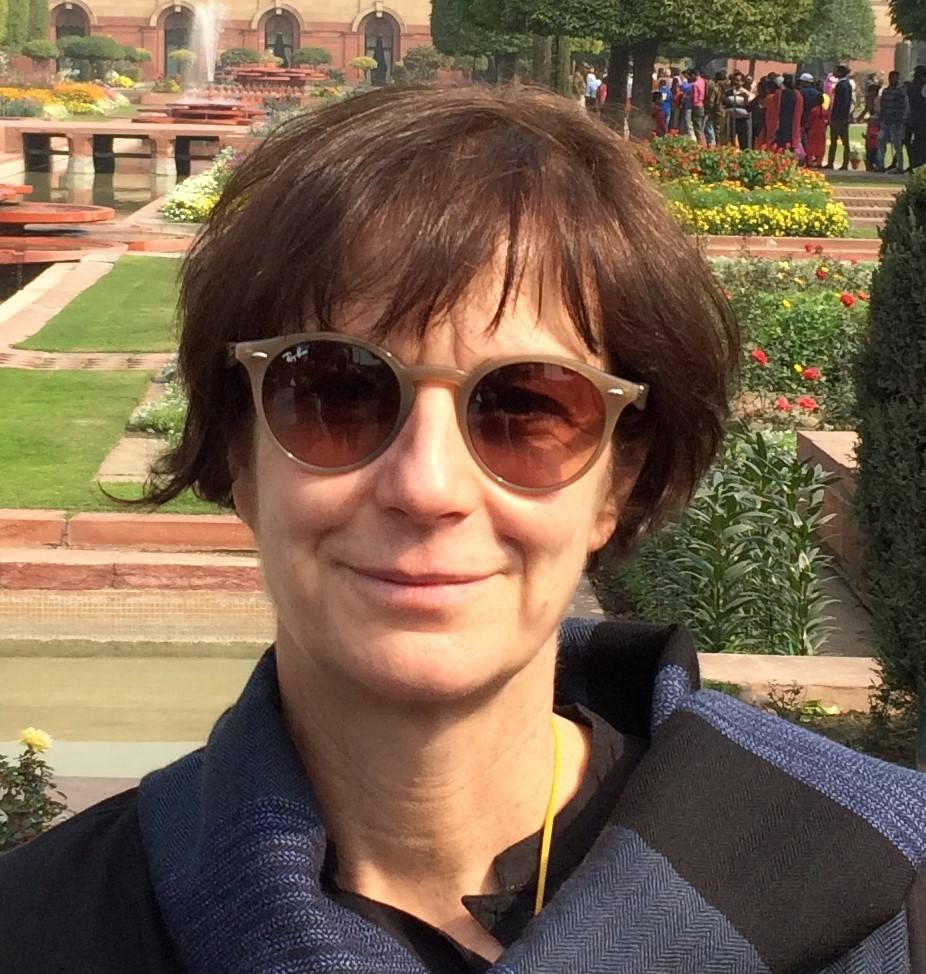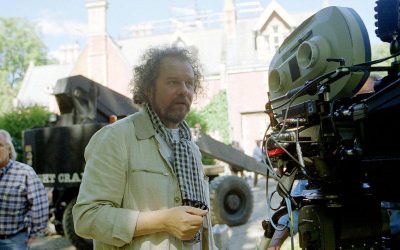Prof. Valentina Vitali is a film historian and theorist. Her research explores the interconnections between aesthetics, history, and economics from a comparative perspective. She has published extensively on cinema in South Asia, aspects of Indian visual culture, and women’s cinema. Valentina has edited a special issue of BioScope on contemporary South Asian women’s cinema, and programmed, among other events, Contemporary South Asian Films by Women (FACT, Liverpool) and Alia Syed: Recent Works (Whitechapel Gallery, London), Award-winning Docs from Myanmar (Close-Up Cinema, London), and Beyond Bollywood: Shorts from South Asia (Flatpack Festival, Birmingham).
RedCut: Tell us why you decided to research and write about women’s cinema in South Asia?
VV: I am very interested in how women move within cinema generally – in how they use a medium which has been discussed by film theorists as being quintessentially patriarchal, and how they navigate an industry that is dominated by men. My interest in Hindi and other cinemas of South Asia partly stems from the fact that when I started watching films from this region I felt that my viewing habits – the baggage and assumptions that I brought with me in my watching of films – were being unsettled. Watching Hindi films forced me to stretch the limits of my cosey European lens. I found that experience intellectually and sensually – you could say, aesthetically – very gratifying. South Asian women’s cinema gets us doubly out of our comfort zone. That, to me, seems so important.
Women bear the grunt of neoliberal politics all over the world. In South Asia and other parts of the Global South the extent to which this is the case is simply more glaring, less hidden away than in, say, Europe or the USA, where public opinion is arrogant enough to still hang on to the delusion of being the epitome of modernity and civilization. And yet even in countries where women are constitutionally and openly excluded, subjugated, and hurt, women still succeed in making films of very high quality – in fact, often of higher quality than the fare peddled by moneyed producers. It is not so much a matter of these women’s courage. Although that too always leaves me open-mouthed. It is rather a question of the public developing the modesty and critical self-awareness that these women’s films say something to and about us, here, in the Global North. That is why I research and write about women’s cinema in South Asia. I want to see more of it and would like others to be able to do the same. Researching, writing, and programming are the tools at my disposal to achieve that. So far, public response to my screenings has been overwhelmingly positive.
RedCut: In your essay ‘South Asian Women’s Cinema: Between Festivals & Streaming’ (NO NIIM Magazine, 22) you wrote that discussions about the importance of film festivals for the circulation and global visibility of South Asian cinemas tend to assume that the festivals that matter are those in the Global North – large A-list festivals, with all their paraphernalia: juries, awards, distributors, the European and US press. You note, in that essay, that in cinema as in other sectors, ‘globalization’ tends to be a one-way affair, and that for too many, acquiring a ‘transnational, global’ audience means featuring at a European or North American festival. Can you tell us more about why this subject is important to you?
VV: I have attended the Locarno International Festival nearly every year since the early 1980s. I grew up with it, and until the 1990s it remained, for me, a reference point, an important door to films that I would not be able to see in London, where I live and where a handful of powerful distributors saturate cinema halls with bland, big-budget Anglophone fare. But from the 2000s even medium-size festivals like Locarno came under pressure to fulfill functions that had little to do with showcasing new, independent cinema from all over the world. One of these was the task of attracting local audiences and distributors with festival-supported or festival-produced films made by ‘emerging talent’. There is a lot to be said for festivals supporting independent, young filmmakers. It becomes a problem when the process of helping a filmmaker develop their project turns into formatting that filmmaker into making cinema that is to the tastes of Global North festival audiences. In other words, whereas watching films made in parts of the world that are quite different from one’s own forces audiences to stretch the limits of their viewing (and thinking) habits, coaching a filmmaker to make a film that speaks to those habits is a form of cultural neo-colonialism. That is why the matter of ‘which festivals’ and ‘what festivals do’ is important to me. There are power dynamics at work that are too often swept under the carpet. Very few dare to spell them out because festivals remain, for most filmmakers anywhere, an essential lifeline.
RedCut: How much does a feminist perspective and feminist approach play a role in your choice of research topics and writings? And how important and impactful is examining feminist concepts in your research
VV: Feminism comes in all forms and shapes. Mine, with regard to cinema, is quite basic: less than 20 percent of directors in the UK film industry are women. Numbers are not better elsewhere. Practices are tacitly at work in the film industry that would make pre-industrial labor systems look progressive. Many of these practices penalize women, especially women of a certain age. That’s simply not acceptable. A feminist perspective allows me to reflect on this situation and use the means at my disposal to do something about it – like screening films made by women. There is nothing subtle about it, because my screenings of women’s cinema respond to a discrimination that is crass and widespread.
I identify as a woman and whether I want it or not that shapes my view of the world. So I might just as well deploy concepts that allow me to inhabit that female identity in ways that are to my advantage. We have a long way to go still before true equality with men is reached. To quote the glorious Laurie Anderson:
‘You know, for every dollar a man makes a woman makes 63 cents. Now, fifty years ago that was 62 cents. So, with that kind of luck, it’ll be the year 3888 before we make a buck.’
She wrote these lines (from the song ‘Beautiful Red Dress’) in 1989! The London’s Women Film Group made their The Amazing Equal Pay Show in 1974. I had the chance to watch it in full recently. It’s disturbing to see how still absolutely relevant it is today, how little has changed in fifty years. The new wave of militant feminist movements that have formed since the early 2010s respond, I think, to the perception that, as far as women’s rights are concerned, things are going backwards, everywhere. I agree with that reading of our times.
Women have made films since cinema began, but today the technology is more accessible. What is missing are venues and opportunities for their films to be seen widely. My hope is that the more audiences are given the chance to watch films by women, the more films by women they will want to see. The powerful players in the industry are in the business of making money. Change will not come from them unless they stand to make a profit. Change will have to come from audiences. As viewers, we should all feel that responsibility – let alone that we owe it to ourselves not to let algorithms make the choice for us.
RedCut: Do you think women’s cinema and perspective is more developed by film festivals? They pay more attention to them?
VV: I don’t know; I don’t have the figures to say whether major festivals actually facilitate women’s cinema or not. But I hear from filmmakers that I know that as far as production is concerned, women directors tend to be encouraged to make films in so-called women’s genres. Indian director Meenu Gaur made the amazing series Qatil haseenaon ka naam, which is a gothic film noir, in 2020-21. She said, in an interview, that until six years or so ago, as a woman she would have not been allowed to direct a crime film. This series was produced by a woman, Shailja Kejriwal, for the Indian streaming platform Zee5. Perhaps change will come first from this new form of television, rather than from the fully fledged cinema industry or festivals. Women have always been given more opportunities in sectors where the financial stakes are lower, as in TV or during the early years of cinema. The more money is invested, the more risk-averse the players are. In cinema women are considered a risk. Were it not for the negative repercussions this has, I would take it as a compliment. Besides, being considered ‘a risk’ has its own advantages: it can make a filmmaker freer to experiment, even as they are left to their own devices, with little access to finance and other forms of industrial support. It sharpens one’s wits and brings a certain urgency to a filmmaker’s work. In this context, friendship and solidarity are invaluable, as, if not more, precious than hard cash.
RedCut: In your book Capital and Popular Cinema you note that popular genre cinema has been approached mostly from a ‘cult’ perspective and through analyses that tend to simply celebrate its assumed ‘transgressive’ qualities. In the book you ask, instead, ‘why may these popular genre films be worthy of study today?’ ‘What can they offer us now?’ Tell us why you decided to work and focus on this subject?
VV: I grew up watching mostly European art cinema. I remember growing up at home where veritable film watching evenings were organized by my parents if a ‘good’ film was scheduled on TV. I also remember my mother taking me to see a retrospective of Ingmar Bergman’s films when I was barely 15. Capital and Popular Cinema started with my own interest, even fascination, with a kind of cinema that my parents never encouraged me and my brothers to see as ‘good’ cinema, but in which I found, as an adult, many of the qualities of experimental and art cinema. I watched hundreds and hundreds of cheap giallos, Mexican horror and wrestling movies, low-budget Indian horror films bordering on porn, and equally cheap Hindi action movies. Some of these have become cult objects, others have been completely forgotten. With Capital and Popular Cinema I decided to turn the gaze onto that process of cultification and obliteration. I wanted to ask: what do we think we do, and what do we actually do, when we make or write film history? Again, it is about responsibility. I learned from feminism that it is important to ask ourselves why we find pleasure in certain things and not in others. I am not interested in deciding, let alone recommending, what should and should not be pleasurable. Pleasure is bound up with our subjectivity; and unlike identity, subjectivity is infinitely layered, unstable, complex, un-pin-downable. But I am interested in understanding why I, and others I share a time-space with, find something pleasurable. Especially if those others, like me, are in a position of power. It’s about turning the gaze onto the gatekeepers.
RedCut: In a world where capitalism, investment, shaping ideologies, and dominant forces still prevail in festivals and institutions, do you see a way for independent cinema and independent thought to be heard? As a researcher, do you believe it’s possible to find solutions to this?
VV: Oh yes, there is always a space where a counterculture can exist. Locked away in a prison in Fascist Italy, Antonio Gramsci developed the concept of hegemony and argued that no matter how dominant a block or a force, its power would never be total and complete. Surely we too can expect that to be the case now, and especially in cinema. Images, like subjectivity, are very complex things, unstable and un-pin-downable. I used to have a friend, the film theorist and historian Paul Willemen. He died over ten years ago, leaving behind some of the best work in film theory and history. We worked in Northern Ireland, and to pass the time we and a couple of other friends bought a projector and watched a variety of films together. Among them were the Chinese ‘model operas’ conceived by Jian Qing, Mao Zedong’s fourth wife. Jian Qing, originally an actress, played a major role in the Cultural Revolution. In the 1950s she was head of the film section of the Communist Party’s propaganda department. Her ‘revolutionary operas’, the CCP’s model for proletarian literature and art, were choreographed using classical ballet like Swiss clockwork – not a speck is out of place. Paul and I used to have fun looking out for anything exceeding or escaping even that level of control, no matter how tiny. It had to be there.
There is always room for independent thought: just look at what filmmakers are doing today in Myanmar and Afghanistan, to name just two recent cases of extreme political oppression. I can’t think of one good reason why anyone may not want to watch what filmmakers there are making.











